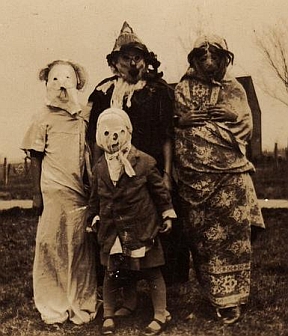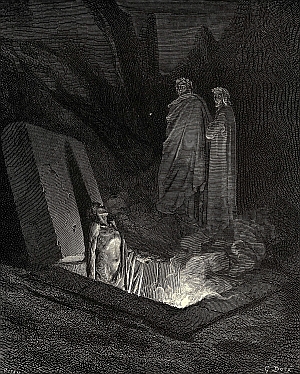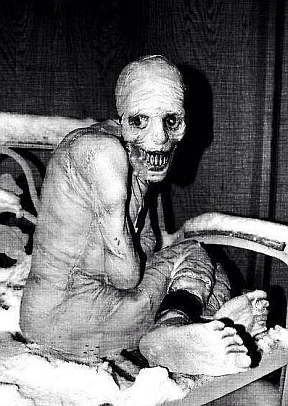The Family That Slays Together…

When Andrej Cherno married outcast harridan Vilma, the newlyweds dedicated themselves to Seskoe*, the goddess of winter, witches, and creation. Andrej and Vilma have three daughters: Mária, the eldest; Anastázia, the middle girl; and Dorota, the toddler. All members of the Cherno family thrive on murder and terror. Andrej and Vilma plan atrocities as creative undertakings designed to both honor Seskoe and encourage the twisted development of their wicked daughters.
In order to protect their identities, the Chernos wear bizarre disguises when on their family outings. These outings include such foul deeds as arson, murder, abductions, and acts of terrorism. Andrej and Vilma are careful to ensure that their daughters all have a chance to contribute to the family’s activities.

Seskoe has granted special powers to the Chernos as rewards for their service:
• Andrej’s melee attacks are vampiric, inflicting an additional 1d4 points of damage. Andrej gains one-half of this additional damage as hit points, healing his injuries and even permitting him to increase his hit points beyond their normal amount (up to a maximum of 44 hit points). Andrej’s bonus hit points fade at a rate of 1d4 points every turn.
• Vilma can use Charm Person, Darkness 15-Foot Radius, Invisibility, Polymorph Self, Sleep, and Suggestion once per day each. Also once per day, she can summon an 8-HD ice elemental.
Ice Elemental: HD 8; AC 3 [16]; Atk 1 strike (2d8 plus Slow); Move 9; Save 8; AL N; CL/XP 9/1100; Special: immune to cold and non-magic weapons.
• Mária can transform herself into a cloud of chilly mist. In this form, she can fly, albeit slowly (speed 3), as well as flow through small spaces.
• Anastázia’s gaze paralyzes those who meet it. Her own family members are immune to Anastázia’s gaze.
• Dorota can backstab for double damage like a thief. She hides in shadows and move silently with a 75% chance of success.
*Seskoe turns water to ice, rain to snow, and sorrow to callousness. She is served by witches who seek to swallow life’s warmth. At the same time, Seskoe represents creation, but devoid of the light of inspiration. She creates without originality or love for her creations.
For Swords & Wizardry:
Andrej
Hit Dice: 5+4 (26 hit points)
Armor Class: 4 [15]
Attacks: 1 weapon (1d6 plus 1d4 vampirism)
Saving Throw: 12
Special: Vampirism
Move: 12
Alignment: Chaos
Challenge Level/XP: 6/400
Vilma
Hit Dice: 5+4 (22 hit points)
Armor Class: 4 [15]
Attacks: 1 weapon (1d8)
Saving Throw: 12
Special: Magic use, regenerate 1 hp/round
Move: 12
Alignment: Chaos
Challenge Level/XP: 7/600
Mária
Hit Dice: 4+3 (20 hit points)
Armor Class: 5 [14]
Attacks: 1 weapon (1d6)
Saving Throw: 13
Special: Gaseous form
Move: 12
Alignment: Chaos
Challenge Level/XP: 5/240
Anastázia
Hit Dice: 3+2 (16 hit points)
Armor Class: 6 [13]
Attacks: 1 weapon (1d6)
Saving Throw: 14
Special: Freezing gaze
Move: 12
Alignment: Chaos
Challenge Level/XP: 4/120
Dorota
Hit Dice: 2+1 (10 hit points)
Armor Class: 7 [12]
Attacks: 1 weapon (1d4)
Saving Throw: 16
Special: Backstab x2, stealth
Move: 12
Alignment: Chaos
Challenge Level/XP: 3/60



